Gay Sweatshop touring production 1979 - 80





“Who Knows?”
The following archive pictures were taken during rehearsals at the Drill Hall during the tour.

Chris Lada, Peter Hall and Kenny Irvine - part of the original cast of the touring production of ‘Who Knows?’
Picture by Gary James taken at run throughs prior to the final performances at the Drill Hall, London - January 1980.
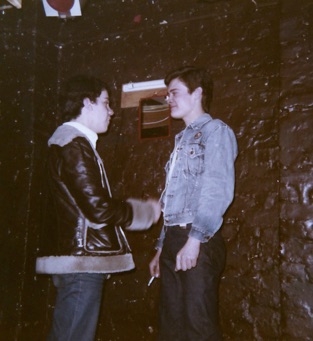



Chris Lada as Dennis and
Kenny Irvine as Robin
Jayne Roberts as Jenny and Lizzie Windsor as Beryl
Kenny Irvine on the set - where are you now Kenny?
Me in full flow as Colin - a really nasty piece of work and the villain of the piece.

Michelle and Gary ‘avin a larf’ on set. Michelle was great fun to work with.

Michelle, Lizzie, Kenny, Peter and Chris in the disliked (by the cast anyway) ‘disco’ scene at the end of the play
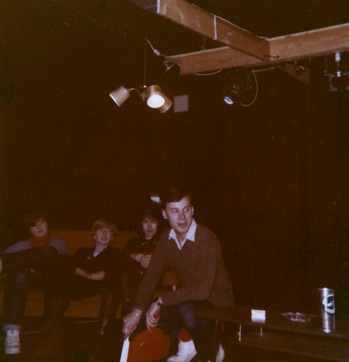
Me being evil as the violent and abusive ‘Colin’ - great fun to play, but the role ended up getting me continually typecast as a yob and a thug. Not my real nature at all of course.
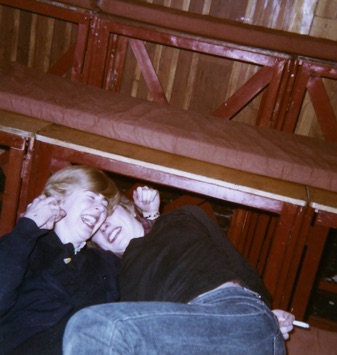
Lizzie and Michelle messing around on set. Good actors and great fun to be with.
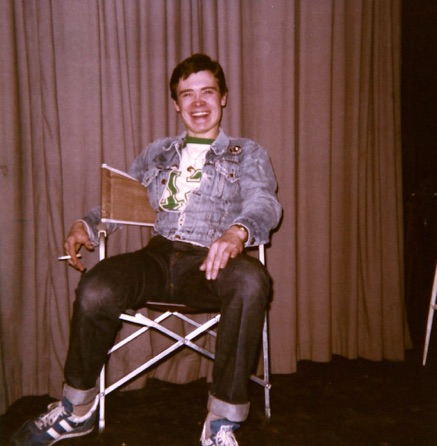
A lovely picture of Kenny, who was probably my best friend in the cast. Kenny was a tough London street kid and certainly bucked the stereotypical gay man image
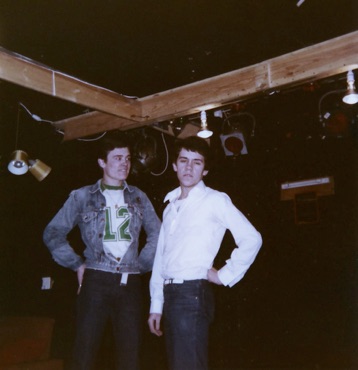
This picture (above) always makes me laugh. Kenny (on the left) was as butch as they come - both in real life and in the play, but Chris played the ‘straight’ guy, and he was as camp as they come.
On the left is a nice picture of Lizzie (I am sure that wasn’t her real name by the way).
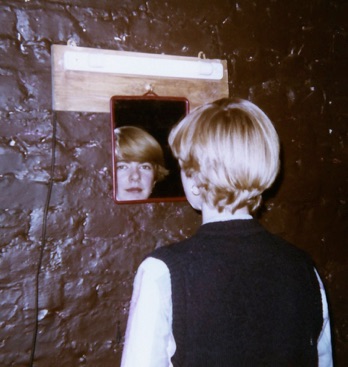
The play ‘Who Knows’ was written by Bruce Bayley, Sara Hardy and Philip Timmins for the Royal Court Theatre (London) and Gay Sweatshop in late 1979.
I recall rehearsals as having taken place mainly at the Oval House Theatre during the late Autumn of ’79. The cast mainly consisted of young actors: Kenny Irvine, Michelle Golaz, Peter Hall, myself, Chris Lada, Jayne Roberts and Lizzie Windsor - some of whom (including me) had been auditioned by Gerald Chapman at the Young People’s Theatre Scheme at the Royal Court Theatre in Sloane Square, London. This followed the success of Gerald’s own production of ‘Not In Norwich’, another play about the trials and tribulations of young gay people, which explored issues such as coming out at school, male attitudes to women, teenage relationship jealousies and violence.
There were slightly older members of the cast as well - Kate Oliver and Christine Richmond. From a personal perspective I recall these two women as being far more radical in their political views than any of the younger cast members were. Rehearsals were sometimes strained and fractious as the two older gay women decided to make the group “feel the pain of their monthly cycles” (?), and at one point even telling the male actors that they “considered all men as potential rapists”. The group did not gel well with these two women, who were, in my opinion, divisive, provocative and aggressive, seemingly oblivious to the negative effects it was having on the other actors. Despite the difficulties we encountered during rehearsals, the tour opened in November 1979 and covered various schools and fringe theatres throughout the country, to critical acclaim and very positive audience responses.
Sadly the Arts Council was in the throes of announcing a large number of funding cuts to arts organisations at this time. The company was in Liverpool when it was announced that we were likely to lose our Arts Council funding. We returned to our final performances at the Drill Hall in London’s West End and the production broke up from there. It is worth recording that this was Gay Sweatshop’s only piece of young people’s theatre and that its success was largely due to the dedicated persistence of Philip Timmins and Gerald Chapman, both of whom had to ride out the usual ill-informed bigotry and ignorance from the press. Despite letters and articles that tried to decry the organisers for “perverting the young” (a ridiculous accusation), it was an amazing experience to see people, both young and old, confront deep seated sociological prejudices in an active and inclusive way. After each performance we would spend time in discussion on these issues with our audiences, many of whom were amazed that the whole cast were in fact gay themselves.
The break up of the company wasn’t the happiest of times and most cast members did not stay in contact for long afterwards. Now, more than 30 years later I often wonder where people are and what their memories are of this extraordinary production. Where are you all now?


